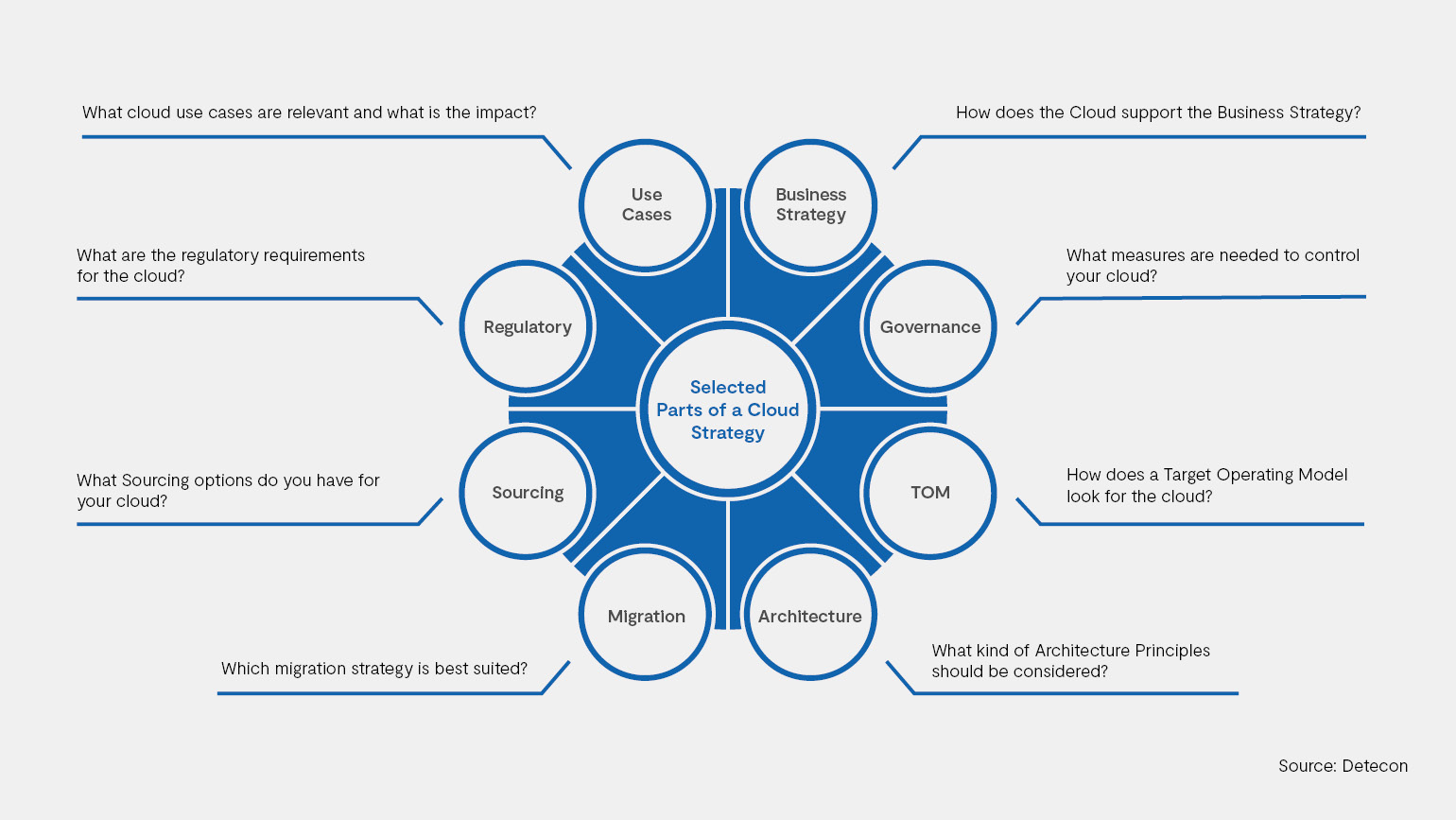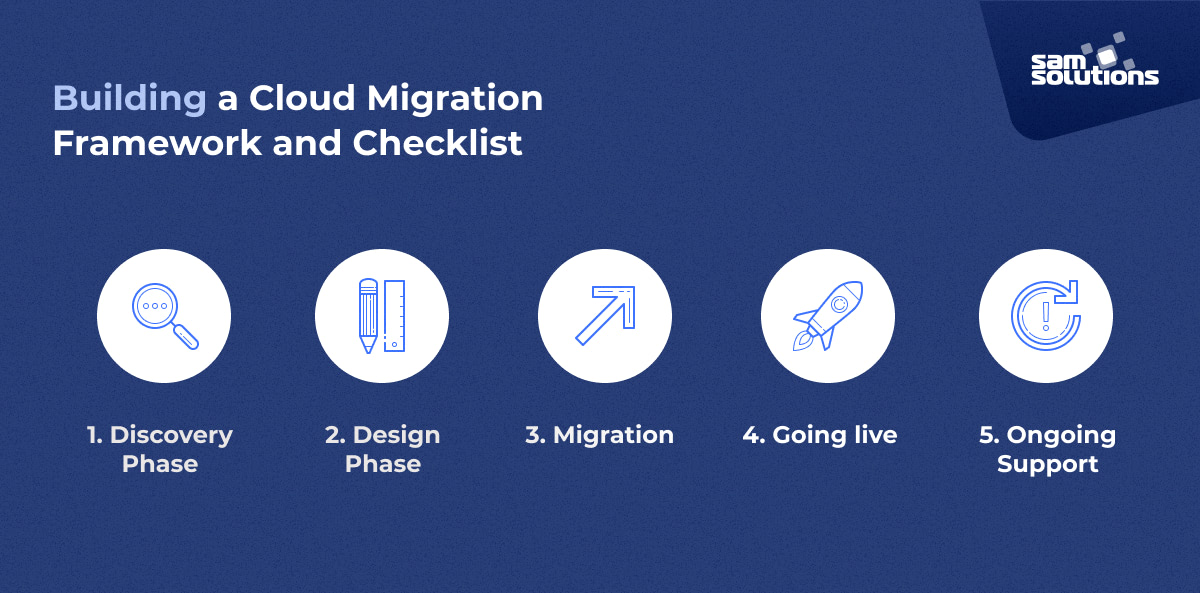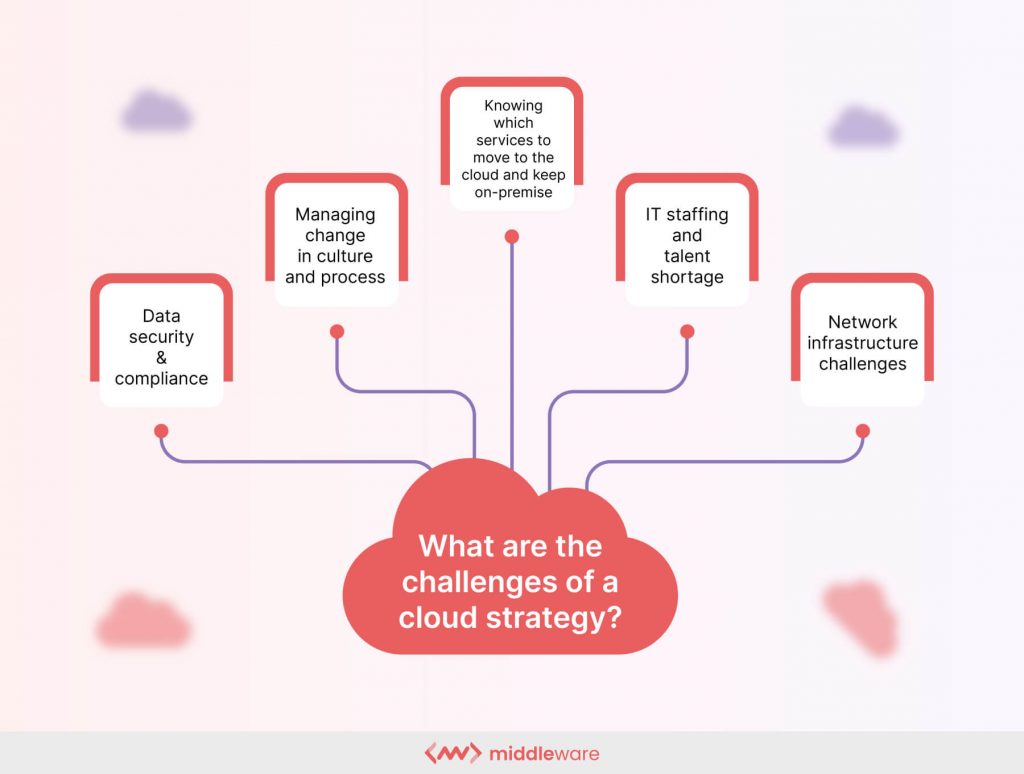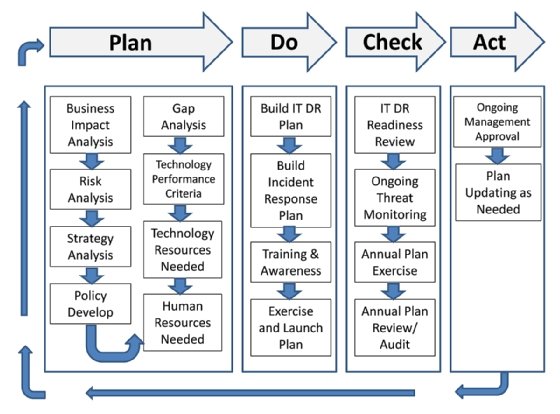
Introduction
Importance of Cloud Strategy for Businesses
In today’s fast-paced digital landscape, a well-defined cloud strategy is not just beneficial—it’s essential for businesses. Companies are increasingly leveraging cloud technologies to enhance flexibility, improve collaboration, and drive innovation. Imagine a scenario where your team can access project files from anywhere in the world, streamlining workflows and boosting productivity. Implementing the right cloud strategy enables organizations to:
- Scale rapidly to meet changing market demands.
- Reduce operational costs significantly.
- Promote remote work and collaboration without boundaries.
Definition and Scope of Cloud Strategy
A cloud strategy refers to a comprehensive plan that outlines how an organization will utilize cloud computing to achieve its goals. This strategy encompasses everything from choosing the right cloud model—public, private, or hybrid—to ensuring compliance and optimizing costs. Embracing cloud strategy allows businesses to innovate faster while ensuring security and reliability in their operations.

Assessing Business Needs
Identifying Goals and Objectives
To embark on your cloud journey, it’s crucial to first identify your business goals and objectives. Consider what you hope to achieve with cloud adoption—whether it’s enhancing data accessibility, improving scalability, or driving down costs. For example, a small retail business might aim to increase its online presence while efficiently managing customer data. Key objectives could include:
- Improving operational efficiency
- Boosting customer engagement
- Facilitating remote work capabilities
These defined goals will guide your entire cloud strategy, ensuring it aligns with your overarching business vision.
Evaluating Current IT Infrastructure
Next, take a thorough look at your existing IT infrastructure. Understanding what technology you currently use and where it falls short can reveal valuable insights. Are your servers becoming obsolete? Is your data storage capacity under pressure? Consider assessing:
- Hardware and software inventory
- Performance limitations
- Integration challenges
By evaluating your current setup, you can pinpoint areas for improvement and develop a tailored cloud strategy that addresses those specific needs, ultimately laying a solid foundation for future growth.

Selecting the Right Cloud Model
Understanding Public, Private, and Hybrid Clouds
Once you’ve assessed your business needs, it’s time to select the right cloud model. Each has distinct characteristics. Public clouds, like Amazon Web Services (AWS), offer scalable resources for many businesses, ideal for startups looking to minimize costs. Private clouds provide dedicated environments, perfect for organizations with stringent security requirements, such as finance or healthcare. Hybrid clouds blend both models, offering flexibility and control to meet diverse needs.
Considerations for Choosing the Appropriate Model
When choosing the right cloud model, consider:
- Data security requirements
- Regulatory compliance
- Scalability needs
Think about a growing e-commerce company. They might prefer a hybrid model to manage sensitive customer data privately while leveraging public resources for peak shopping seasons. Reflect on your unique requirements to ensure you make the best choice for your organization’s future.

Security and Compliance Considerations
Data Security Measures in the Cloud
As you navigate your cloud strategy, prioritizing security is key. Protecting sensitive data is not just a technical challenge but a business imperative. Cloud providers offer various data security measures including encryption, which scrambles data making it unreadable without keys. Multi-factor authentication adds an extra layer of protection.
Consider these essential security measures:
- Regular security audits
- Intrusion detection systems
- Data loss prevention protocols
Implementing these strategies can mitigate risks and keep your organization secure.
Compliance Regulations and Legal Requirements
Compliance is another critical factor. Different industries face distinct regulations—healthcare adheres to HIPAA, while finance must follow GDPR. Understanding these legal requirements helps ensure your cloud solutions align with established standards.
It’s beneficial to:
- Conduct a compliance audit on your cloud provider.
- Stay updated on changes in regulations.
By being proactive about compliance, businesses can safeguard themselves against potential fines and legal challenges while establishing trust with clients.

Cost Analysis and Budgeting
Estimating Cloud Costs
After addressing security and compliance, it’s time to dive into the financial aspects of your cloud strategy. Estimating cloud costs can be tricky, as expenses can fluctuate based on usage and services. Most cloud providers offer pricing calculators to help you gauge potential monthly expenses based on storage, processing power, and data transfer.
Consider these common cost components:
- Storage costs for data backups
- Compute costs for servers and applications
- Data transfer fees for moving data in and out
Personalizing these estimates to fit your business needs helps set a clear financial expectation.
Creating a Realistic Budget Plan
Now that you have a grasp on potential costs, creating a realistic budget plan is essential. Begin by evaluating your historical IT expenses to establish a baseline, then factor in those cloud estimates in alignment with your business goals.
Tips for budgeting include:
- Allocating funds for unexpected costs (buffer)
- Reassessing your budget quarterly to adapt to changing needs
- Asking for discounts or committed usage savings from your cloud provider
A thoughtful budgeting approach ensures you can leverage cloud benefits without financial strain, paving the way for sustainable growth.

Implementation and Migration Strategies
Planning the Migration Process
As you get ready to implement your cloud strategy, a well-planned migration process is crucial. Start by mapping out your current applications and data—this inventory will serve as the foundation for your migration strategy. Break the migration into manageable phases, prioritizing critical applications first to minimize disruption.
Key planning steps include:
- Assessing dependencies between applications
- Identifying migration tools tailored to your needs
- Setting a timeline for each phase
Planning thoughtfully can make the transition smoother and more efficient.
Best Practices for Seamless Implementation
To ensure seamless implementation, consider adopting some best practices. Communication is key—keep your teams informed and engaged throughout the process. Training staff on new tools can ease the transition and foster a culture of cloud adoption.
Here are a few more best practices:
- Conduct a pilot test with a subset of your applications.
- Ensure robust backup solutions are in place before migrating.
- Regularly review progress against your migration timeline.
By following these guidelines, organizations can achieve a successful cloud transition, harnessing the full potential of cloud technologies while minimizing operational hiccups.

Monitoring and Optimization
Performance Monitoring Tools
After successfully migrating to the cloud, maintaining optimal performance is essential. Utilizing performance monitoring tools can provide critical insights into how your applications are running. Tools like Amazon CloudWatch, Google Stackdriver, and Azure Monitor offer real-time analytics, allowing you to identify bottlenecks or performance issues early.
Consider monitoring:
- CPU and memory usage to prevent overloads
- Response times for user interactions
- Error rates to catch issues swiftly
Having these insights at your fingertips enables proactive adjustments that maintain smooth operations.
Continuous Improvement Strategies
To ensure your cloud environment is always optimizing, focus on continuous improvement. Regularly review performance data and customer feedback to identify areas for enhancement. Engaging your team in brainstorming sessions can unveil innovative solutions to existing challenges.
Here are effective continuous improvement strategies:
- Implement automation tools to streamline routine tasks.
- Set regular performance reviews to assess progress against benchmarks.
- Encourage team training on updates and new technologies.
By fostering a culture of continuous improvement, businesses can adapt swiftly, ensuring their cloud solutions deliver ongoing value and efficiency.

Training and Skill Development
Upskilling Teams for Cloud Adoption
As your organization embraces the cloud, investing in training and skill development is vital for successful adoption. Upskilling your teams ensures they feel confident navigating new tools and technologies, making the transition smoother. For instance, an IT manager could lead workshops focusing on cloud service integration, allowing team members to practice hands-on.
Consider these areas for upskilling:
- Cloud infrastructure management
- Data security practices
- Application development in the cloud
By fostering a culture of continuous learning, you empower employees to embrace the cloud effectively.
Training Resources and Programs
To facilitate this journey, leverage various training resources and programs. Many cloud providers offer comprehensive training courses, like AWS Training or Google Cloud Skills Boost. Additionally, platforms like Coursera and Udemy host a wealth of certifications tailored to cloud technologies.
Here are some valuable resources to explore:
- Online courses for flexible learning
- Webinars for real-time insights
- Community forums to share knowledge and experiences
By providing diverse training options, your teams will be well-equipped to maximize cloud capabilities, driving your organization’s success in the digital landscape.

Integration with Existing Systems
Ensuring Compatibility and Interoperability
As your organization embraces cloud technologies, ensuring compatibility and interoperability with existing systems is crucial. Without seamless integration, data silos can emerge, hampering efficiency. Prior to migration, assess your current infrastructure to identify potential integration challenges. For instance, if your organization relies on legacy software, it’s essential to choose cloud solutions that can communicate effectively with those systems.
To facilitate this process, consider:
- APIs for smooth data exchange
- Middleware solutions to bridge gaps between systems
- Regular compatibility checks during and after migration
Establishing these connections enhances overall productivity and keeps teams connected.
Avoiding Disruption in Operations
To avoid disruption during this transition, develop a phased integration approach. Rather than switching everything at once, gradually migrate systems, which minimizes risk and allows for troubleshooting. Communication is key; keep stakeholders informed throughout the process to manage expectations effectively.
Here are a few tips to ensure smooth operations:
- Conduct user acceptance testing to validate integration
- Monitor system performance following changes
- Create a contingency plan for any potential setbacks
By strategically integrating with existing systems, organizations can leverage cloud benefits without compromising operational continuity, setting the stage for ongoing success in their digital transformation journey.

Disaster Recovery and Business Continuity
Developing a Robust Recovery Plan
Incorporating disaster recovery into your cloud strategy is non-negotiable. A robust recovery plan prepares your organization for unexpected events, ensuring minimal downtime. Start by identifying critical assets and data, then establish recovery time objectives (RTO) and recovery point objectives (RPO) that align with your business goals. For example, a retail company might prioritize customer order data to ensure seamless service during disruptions.
Key components for developing your recovery plan include:
- Regular data backups in multiple locations
- Testing recovery processes periodically
- Designating a response team for quick action
Such planning lays the groundwork for effective recovery when crises strike.
Ensuring Business Continuity in the Cloud
To ensure business continuity in the cloud, consider leveraging redundancy and failover mechanisms. By deploying applications across multiple servers or regions, you can seamlessly redirect traffic if an outage occurs. Establishing monitoring systems also helps detect issues before they escalate, allowing for a proactive rather than reactive approach.
Additionally, remember to:
- Train staff on emergency protocols
- Communicate recovery plans to stakeholders
- Review and update plans regularly to adapt to new threats
With these strategies in place, organizations can confidently navigate disruptions, safeguarding both operations and customer trust amid challenges.

Case Studies and Success Stories
Real-world Examples of Effective Cloud Strategies
Examining real-world examples of effective cloud strategies can provide invaluable insights for any organization. For instance, a leading e-commerce platform transitioned to a hybrid cloud model, which allowed them to scale operations seamlessly during peak shopping seasons. By combining public and private clouds, they ensured robust security for sensitive customer data while leveraging the agility of public resources for high traffic.
Another inspiring case comes from a healthcare provider that implemented cloud-based electronic health records. This strategic move improved patient care through better data accessibility, showcasing the transformative potential of cloud technology.
Lessons Learned from Successful Implementations
From these success stories, several lessons can be gleaned:
- Prioritize security from the outset to protect sensitive information.
- Engage stakeholders early in the process to foster buy-in.
- Focus on training to ensure teams are equipped to handle new technologies.
By embracing these takeaways, organizations can tailor their cloud strategies for success, driving both innovation and efficiency while navigating the digital landscape.

XII. Future Trends in Cloud Technology
Emerging Technologies and Innovations
As we look ahead, the landscape of cloud technology is set to evolve dramatically with emerging technologies and innovations. Concepts like artificial intelligence (AI) and machine learning (ML) are being increasingly integrated into cloud services, enabling businesses to leverage data analytics for insightful decision-making. For instance, predictive analytics can forecast customer behavior, enhancing personalized marketing strategies.
Additionally, the rise of edge computing allows for data processing closer to the source, reducing latency and improving performance, which is crucial for IoT applications.
Predictions for the Future of Cloud Strategy
Moving forward, organizations should anticipate several transformative trends in cloud strategy:
- Increased automation in cloud management, simplifying operations.
- Enhanced security measures using AI for threat detection.
- Greater emphasis on sustainability, focusing on energy-efficient cloud solutions.
By adapting to these trends, businesses can remain competitive and agile in a rapidly changing market, maximizing their cloud investments for ongoing success.

XIII. Conclusion and Key Takeaways
Recap of Essential Steps for Building a Cloud Strategy
As we conclude our exploration of cloud strategy, it’s crucial to recap the essential steps for building an effective framework. Begin by assessing your business needs and setting clear goals. Next, choose the right cloud model—public, private, or hybrid—and ensure robust security and compliance measures. Don’t forget to plan for implementation and migration, followed by continuous monitoring and optimization. Finally, prioritize training and skill development within your teams.
Final Thoughts on the Importance of Cloud Adoption
Embracing cloud adoption isn’t just about technology; it’s about fostering agility, innovation, and resilience. In today’s competitive landscape, a solid cloud strategy can empower organizations to adapt quickly and scale effectively. By prioritizing the steps outlined, businesses can unlock the full potential of cloud computing, driving growth and success for years to come.

